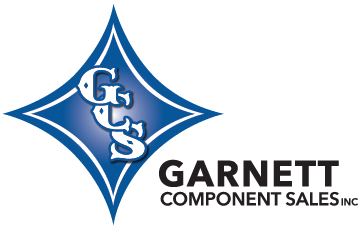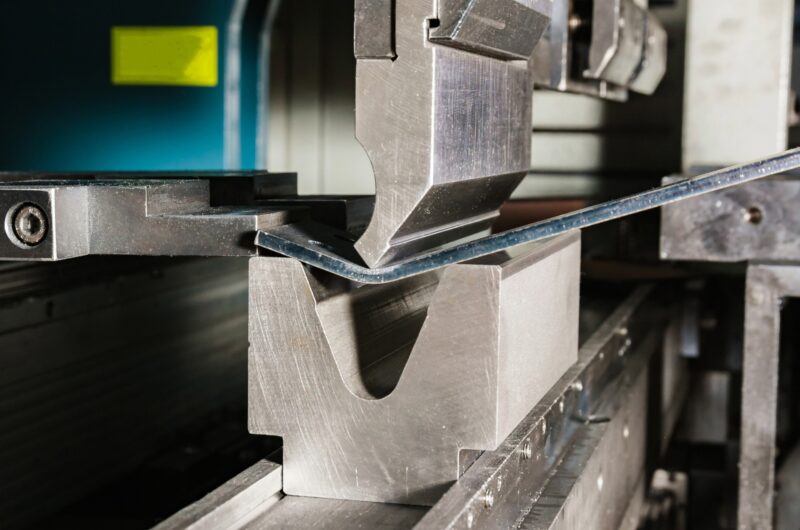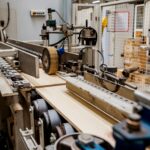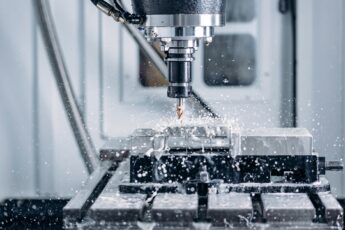Metal fabrication plays a key role in many industries. From aerospace and automotive to medical and industrial, shaping metal the right way is what brings durable, purpose-built parts to life. Whether you’re working on a bracket, panel, housing, or duct, how you form the metal will directly affect its performance and longevity.
One major decision during fabrication is choosing the right forming method. Often, it comes down to bending vs rolling. On the surface, both seem similar. They reshape metal, yes—but the way they do it and the results they deliver are quite different. Picking the wrong one for your job could mean added stress on your materials, delayed production, or parts that need rework. So how do you know which is the smarter pick?
Understanding Metal Bending
Metal bending changes the angle of a metal sheet along a straight axis. It’s kind of like folding paper, just with a lot more force and precision. To get the desired shape, machines apply pressure along a line, forcing the metal to bend but not break.
Common machines for bending include press brakes and folding machines. Depending on the job, a few bending methods may be used:
– Air bending: The punch presses the metal partway into a die, leaving a gap at the bottom to allow spring-back. This method is flexible across different thicknesses and angles.
– Bottoming: The metal is pressed all the way into the die, reducing spring-back and helping with tighter accuracy.
– V-bending: A standard go-to, using a V-shaped die and punch. Great for forming sharp angles.
– Roll bending: Though it includes the term “bending,” this uses rolls instead of punches and isn’t the same as traditional straight-line bending.
Bending is most useful when sharp angles and flat sections are needed. Think channels, brackets, small panels, and enclosures. For jobs that require defined lines and structural support without curves, bending is often the most efficient and accurate method.
Another benefit of bending is speed. Once setup is complete, it allows for high output in short or medium production runs. The machinery also tends to take up less floor space, which makes it a good option for facilities with limited room or localized lines. Bending isn’t always great for thick or wide materials, though. And if you need a smooth arc or cylindrical shape, it might fall short.
Exploring Metal Rolling
Rolling is a gradual process where the metal is passed between rollers until it curves into shape. Imagine curling a sheet of paper into a tube without folding it—you just apply even pressure as it moves. That’s the concept here, only with pressure applied by heavy rollers instead of fingertips.
Types of rolling equipment include:
1. Initial pinch rolling: Two lower rollers hold the sheet while an upper roller applies pressure from above to create a curve.
2. Pyramid rolling: Three rollers placed in a triangular setup offer improved control and adjustments during forming.
3. Four-roll machines: These include an additional roller to tighten tolerances and reduce the number of passes for a smoother curve.
Rolling is typically used for creating cylinders, curves, and continuous forms. Think pipe segments, tanks, silos, cones, and curved panels. It’s effective on large or thick sheets that might resist traditional bending or put too much strain on standard equipment.
A big plus with rolling is the reduced stress on the material. Because the pressure is applied evenly and gradually, there’s a lower risk of cracking or weakened edges, and better consistency in the shape. This method helps deliver a smoother, rounder finish. On the downside, setup can take a bit longer, especially for short runs. But when the job calls for smooth curves and strength through the bend, it’s often worth the extra step.
Key Differences Between Bending and Rolling
Though both are shaping methods, bending and rolling suit different goals. Knowing what makes each unique can help avoid the wrong approach.
– Final shape: Bending leads to sharp angles, usually at tight corners or folds. Rolling produces arcs, cylinders, or flowing curves.
– Best-fit materials: Bending handles thin to medium gauge metals well. Rolling works better on thicker, wider materials that require gradual forming.
– Outcomes: Bending can result in spring-back or stress lines along the bend. Rolling tends to apply less strain to the metal and maintains surface quality better over curves.
– Speed and repeatability: Bending is faster for simple, repeatable shapes. Rolling is slower but ideal for complex curves that require precision.
– Setup and equipment: Bending equipment can be smaller and quicker to set up. Rolling machines are larger and may need additional passes to perfect the shape.
Picture a tank for industrial fluid storage—it needs to hold pressure while keeping a perfectly rounded shape. Rolling is the clear choice there. On the other hand, say you’re fabricating a simple L-bracket that needs clean angles and a snug fit for mounting. That’s what bending is made for.
In some situations, both methods are used together. A rolled section might be followed by a bent end to add mounting points. Or an enclosure could have a rounded shield with flat panels added on. Understanding what’s needed across the production cycle helps engineers and builders plan ahead.
Choosing the Right Method for Your Project
Picking between bending and rolling doesn’t have to be complicated. You just need to match each step of your build to the job’s demands. Here are a few things to think about before choosing.
– Material type and thickness: Is the metal stiff or flexible, thin or thick? Bending is great for light gauge sheets. Rolling handles heavy-duty pieces better.
– Desired shape: Are you forming angles or curves? Sharp corners suggest bending. Smooth arcs need rolling.
– Quantity: High-volume jobs with standard shapes often go faster with bending. For complex, curved pieces where precision matters more than speed, rolling holds the advantage.
– Structural needs: Long-term performance and surface quality can differ based on forming type. Rolling creates stronger curves with fewer weak spots across the bend.
– Available tools: Not all shops are set up for both processes. What machines are on-site? What capabilities do your partners or suppliers offer?
When planning the build, don’t just think about the forming step. Consider how the finished product will be used. Load requirements, installation steps, and follow-up processes all matter.
And remember—it’s okay to mix methods. A piece that’s curved to fit a surface can still have bent edges or flanges added. Start design discussions early so adjustments don’t throw you off later.
Making Metal Work Smarter
When it comes to forming metal, no one-size-fits-all rule exists. That’s why making the right choice between bending and rolling upfront can go a long way in keeping jobs on track. Both techniques get the job done. Where they really stand out is how they shape the result.
Look closely at what the part needs to do, what shape it should take, and what tools you have access to. This way, you avoid delays, reduce stress on the materials, and deliver something that actually works as planned.
A little planning goes a long way in fabrication. Match your methods to your materials and goals. When those line up, the rest of the process usually follows without too much trouble.
If you’re looking for support with precision forming, cutting, or fabrication, we can help you find the right fit. Our team offers guidance and dependable options for improving build quality and design integrity. When you need reliable solutions backed by industry experience, explore your options for metal fabrication with Garnett Component Sales—where design and performance come together to deliver lasting results.








